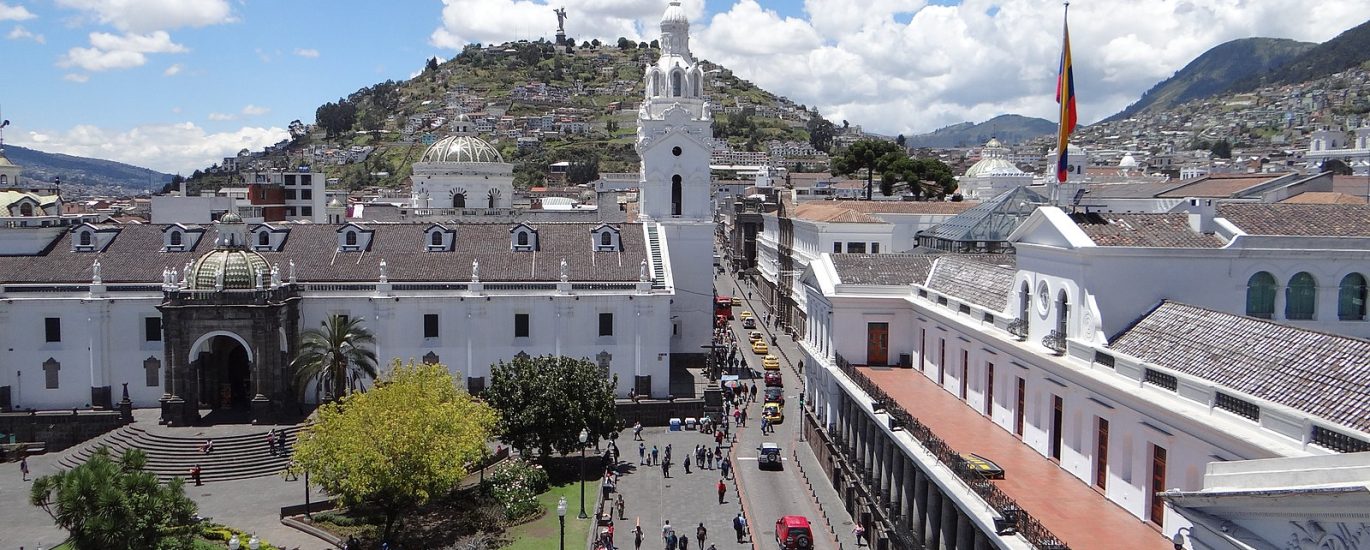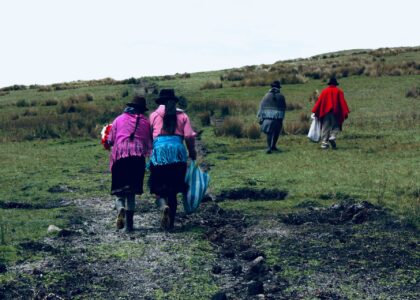In the heart of Ecuador’s capital, Quito’s Historic Center stands as a vivid reflection of the city’s deep history, culture, and architectural brilliance. Designated as a UNESCO World Heritage Site, this area is a reminder of past times and a symbol of global heritage preservation. Walking its paved streets and observing its age-old buildings, we understand the vital need to protect such historical places. They aren’t just notable spots; they connect us to our history, highlighting human achievement and the enduring spirit of civilization.
Located in the center of the city, Quito’s Historic Center, often referred to by locals as “El Centro Histórico,” is framed by the undulating Andean hills. Its layout, a mix of slender lanes, broad plazas, and tree-bordered streets, reflects its colonial influences. Historically, its prime position wasn’t coincidental. Elevated and naturally defensible, it became a central hub for trade, communication, and cultural interactions in the region. As one walks its streets, there’s a sense of the past—a buzz of ancient markets, faint church bell tones. Every turn in this central district carries a piece of history, echoing its crucial role in both Quito’s and Ecuador’s broader historical tapestry.
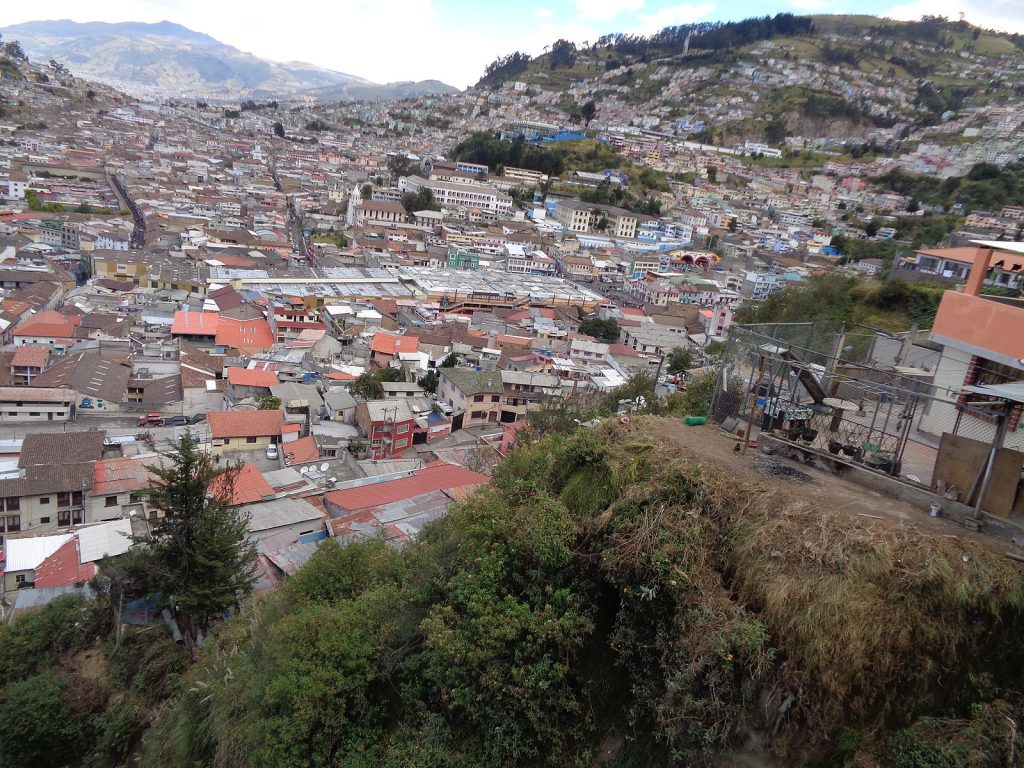
The Architectural Wonders of Quito
Quito’s Historic Center is packed with architectural gems. Prominent landmarks such as the Cathedral of Quito and the Church of the Society of Jesus showcase the area’s religious significance. Their impressive spires and domes serve as visual anchors in the cityscape, reflecting a rich history of faith.
Beyond religious structures, colonial buildings stand out. Their distinct balconies and courtyards provide glimpses into past residents’ daily lives and the city’s vibrant marketplace culture.
What’s truly remarkable about the Historic Center is its diverse artistic heritage. The buildings display a mix of Spanish Baroque and Italian Renaissance influences. Moorish elements can be spotted, complemented by touches of Flemish design. With its bold patterns, Indigenous art is also present, creating a unique fusion that highlights Quito’s multifaceted cultural past. The Historical Center is more than just a collection of buildings; it vividly represents the city’s varied historical and cultural influences.
Quito's Historical Significance
Long before Spanish footsteps echoed in its streets, Quito had already carved a niche in history. As an ancient hub for indigenous cultures, its roots reach deep into pre-colonial times. Then came the Spanish in the 16th century, ushering in a new era of architectural and cultural influences that forever changed Quito’s landscape.
Today, the Historic Center stands as a vivid snapshot of this layered history. Indigenous foundations blend seamlessly with Spanish colonial architecture, each stone and structure bearing witness to the city’s transformative journey. From ancient indigenous settlements to a bustling Spanish colonial outpost, the Historical Center has seen it all. And as visitors travel its streets, they’re not just observing structures; they’re stepping into a living narrative of Quito’s vibrant past.
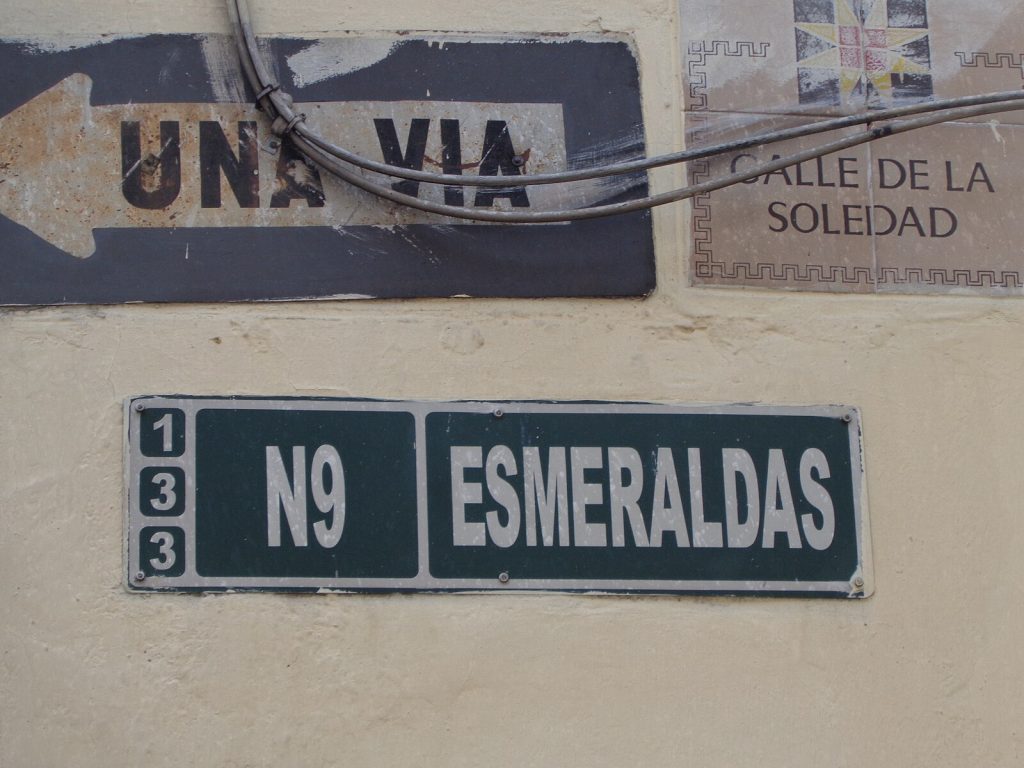
Cultural Impact of Quito's Historic Center
The Historic Center of Quito isn’t just a relic of the past; it’s a bustling epicenter of daily life. Walk its streets, and you’re met with vibrant scenes: artisans crafting traditional goods, vendors showcasing fresh produce, and musicians playing local tunes.
Beyond its historical structures, the center thrives as a beacon of culture and arts. Local galleries spotlight both time-honored and contemporary Ecuadorian artists, while theaters come alive with performances that range from traditional dances to modern plays.
Furthermore, its role in commerce remains significant. The same streets that once saw bartering in pre-colonial times now host thriving markets and shops. Entrepreneurs, traders, and tourists converge, making transactions and exchanging stories.
Quito's UNESCO World Heritage Designation
UNESCO’s World Heritage designation recognizes places of immense cultural or natural significance. Quito’s Historical Center, rich with history and architecture, seamlessly met these criteria. The Center’s preservation of both indigenous roots and Spanish colonial influences showcased a harmonious blend of diverse eras. Receiving this UNESCO designation wasn’t just an honor; it positioned Quito’s Historic Center on a global stage. This recognition underscores its value to world heritage, urging both locals and the international community to protect and cherish this irreplaceable piece of history for future generations.
Preserving Quito for Future Generations
Quito’s Historic Center is more than just a landmark; it’s a legacy. To ensure its longevity, ongoing restoration initiatives are actively in place. These projects prioritize the delicate balance between modern needs and historical authenticity. While infrastructure developments aim to cater to the demands of today, they’re implemented with a keen awareness of the Center’s historical fabric. Efforts are consistently made to use materials and methods that complement the original architecture. This commitment ensures that while the Historic Center evolves to accommodate the present, it never loses sight of the rich past that defines its very essence.
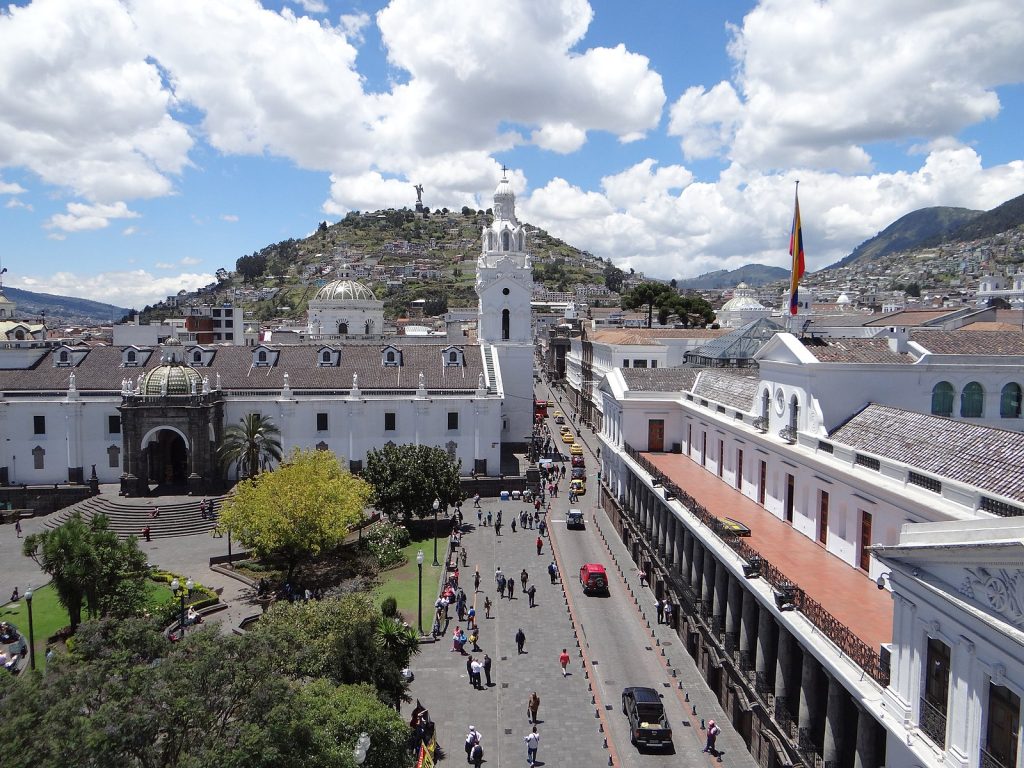
Visiting Quito
Quito’s Historic Center beckons travelers with its captivating blend of history, culture, and beauty. For those fortunate to walk its cobbled streets, it’s essential to approach with a sense of reverence. Respecting local customs, supporting genuine artisans, and staying mindful of preservation efforts are small acts that ensure the site’s continued splendor.
Highlights not to be missed include the ornate churches, bustling plazas, and serene courtyards that offer a window into Quito’s soul. The best time to visit is during the early morning or late afternoon when the soft light amplifies its charm and the midday rush has died down.
Quito’s Historical Center is more than just an Ecuadorian treasure; it’s a testament to humanity’s rich tapestry. By visiting, we don’t just enrich our own experiences but underscore the importance of safeguarding such places for the future. Every brick and mural tells a story, and it’s our collective duty to ensure those stories endure.
To experience the majesty of this historical site in person, book a trip with Engaged Education today and expand your horizons!


